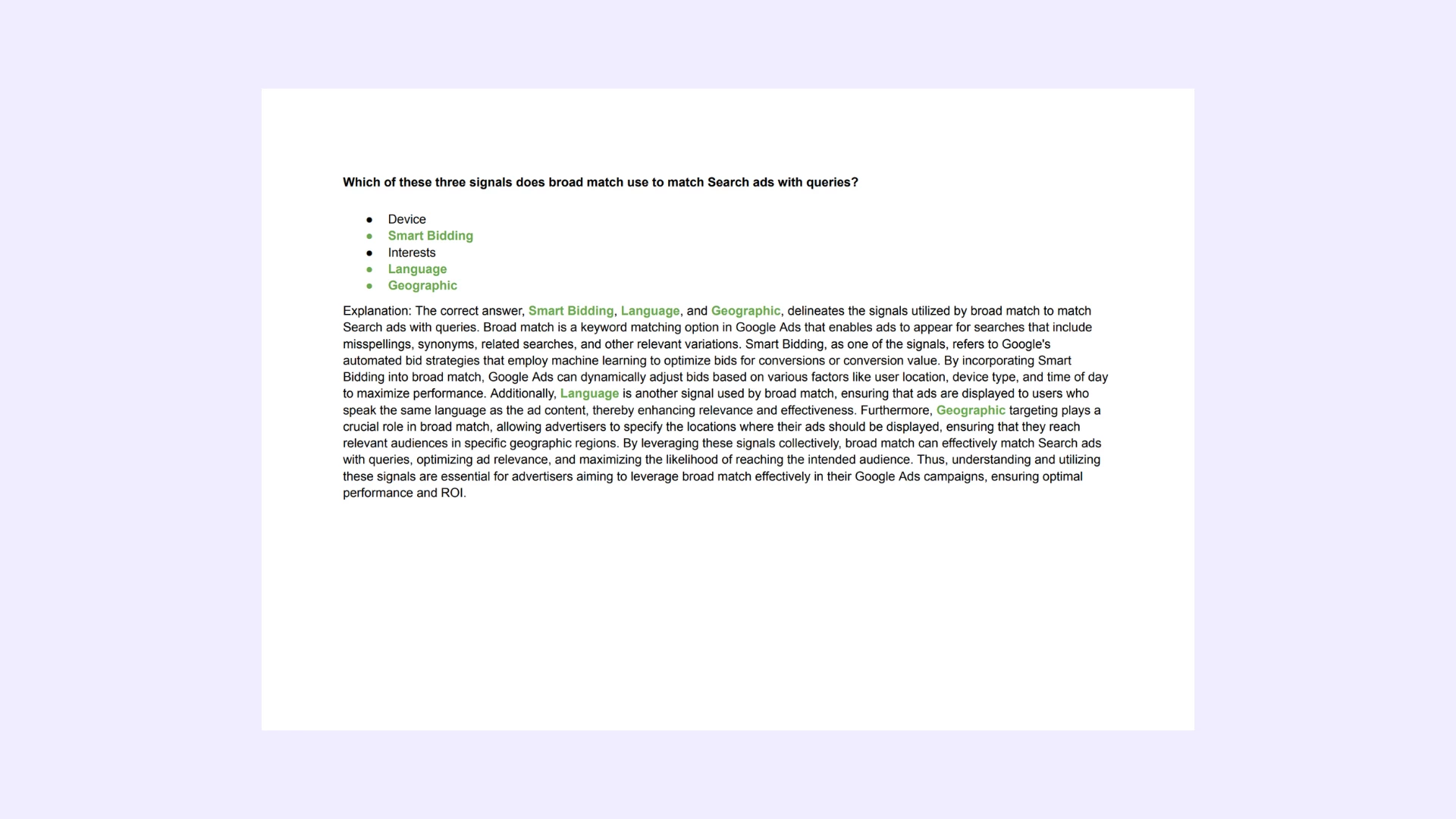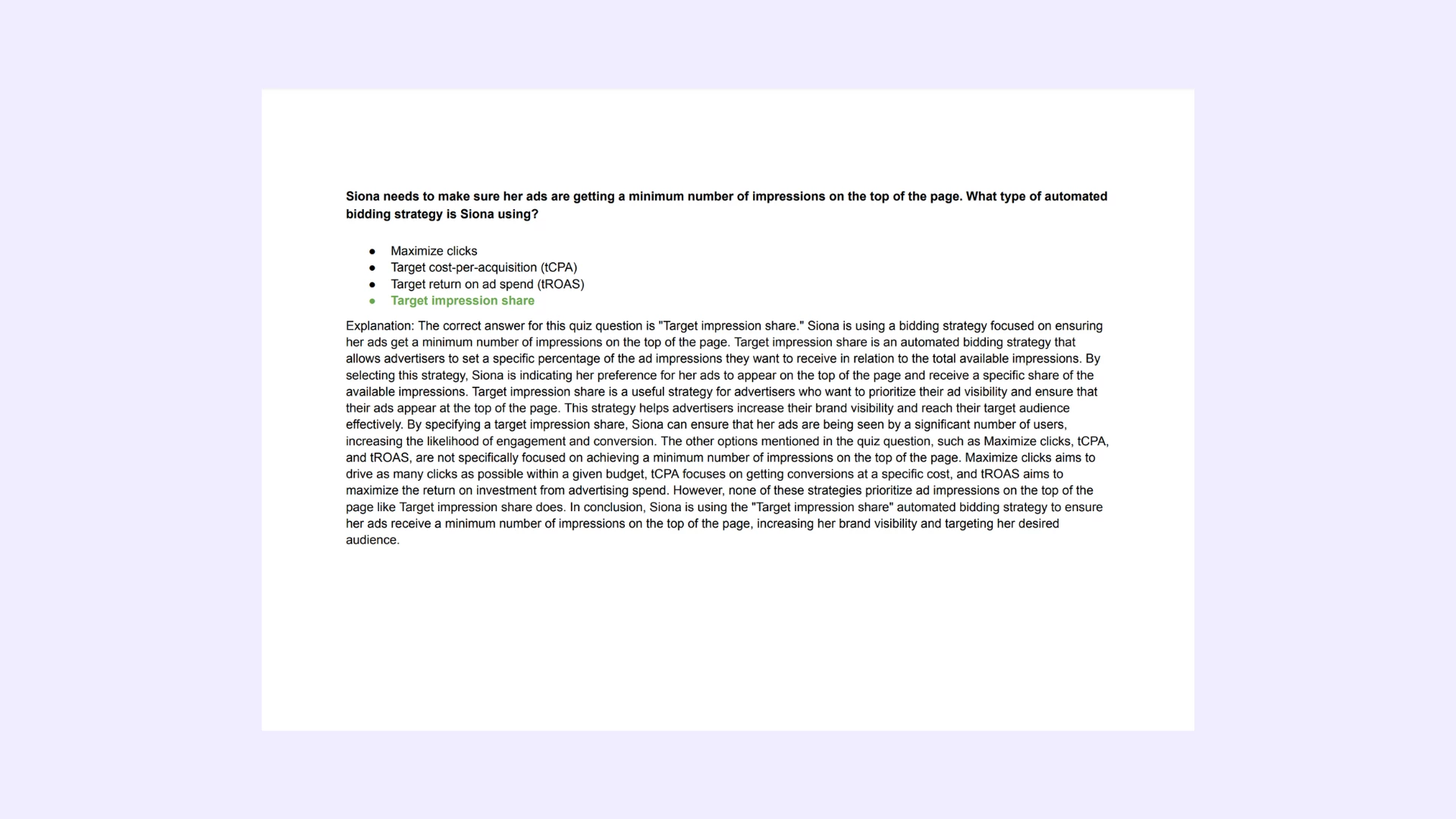You're trying to determine how effectively your ads are driving online sales and generating leads through sign-ups, and you compare your Google Ads data with your offline data. That's when you see a difference in the number of sign-ups in Google ads vs. your offline data source. Assume everything is working properly and the issue lies with when a conversion was counted. What would you say is causing this data discrepancy?
You'd say that Google Ads reports conversions against the date/time of the click that led to the conversion. Depending on the other data source, it might use the date/time of the conversion itself.
You'd say that Google Ads reports views against the device type of the view that didn't lead to a conversion. Depending on the other data source, it might use the date/time of the conversion itself.
You'd say that Google Ads reports clicks against the date/time of the event that led to the conversion. Depending on the other data source, it might use the click of the conversion itself.
You'd say that Google Ads reports conversions against a unique ID of the event that led to the click. Depending on the other data source, it might use the click of the conversion itself.
Choose an option to see if it’s correct. Check the explanation below. Learn Smarter, not Harder.

Google Ads Roll. Includes Answers for Every Real Google Ads Certification Exam.
All-in-One: Get all Google Ads exams answers with explanations in one bundle. This package includes answers for every current Google Ads certification. Regular updates to reflect the latest exam version. -> See what's included.
Questions | Answers | Explanations. Free Lifetime Updates.


Need a single cerification exam answers? Check out our -> list of certification exams answer keys. Learn Smarter. Obtain or Renew your certificates with peace of mind!
Explanation: You’re trying to determine how effectively your ads are driving online sales and generating leads through sign-ups, and you compare your Google Ads data with your offline data. That’s when you see a difference in the number of sign-ups in Google ads vs. your offline data source. Assume everything is working properly and the issue lies with when a conversion was counted. What would you say is causing this data discrepancy?
Explanation: The data discrepancy between Google Ads and the offline data source regarding the number of sign-ups can likely be attributed to how each platform counts conversions. **Google Ads reports conversions against the date/time of the click that led to the conversion.** In contrast, the offline data source might use the date/time of the conversion itself. This difference in attribution methodology can result in variations in reported conversion numbers, especially if there's a delay between the ad click and the actual sign-up or conversion event. For instance, if a user clicks on an ad but doesn't complete the sign-up process until later, Google Ads would attribute the conversion to the date/time of the initial click, whereas the offline data source might attribute it to the date/time when the sign-up occurred. Understanding these nuances in conversion tracking is crucial for reconciling discrepancies between online and offline data sources and gaining accurate insights into campaign performance.
Were do I find this certification program?
This certification program is available on the Google SkillShop Platform. With our file, you can get certified in just a few minutes. Free updates are included.
Save time on exams and spend more time practicing.
Best-value Guides
- Special Bundle Offer Google_Ads_Roll
- Special Bundle Offer HubSpot_Exams_Roll
- Special Bundle Offer Google_SkillShop_Roll
- Special Bundle Offer Marketing_Platforms_Roll